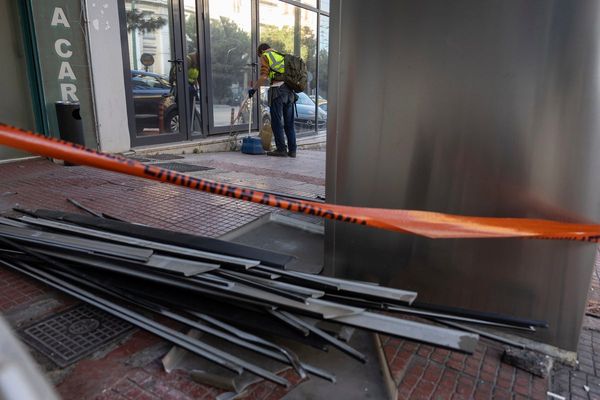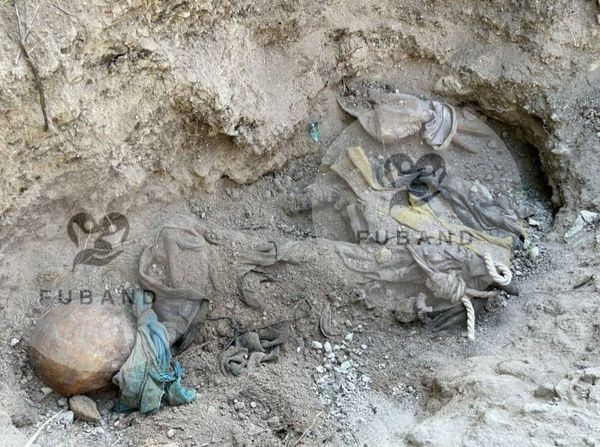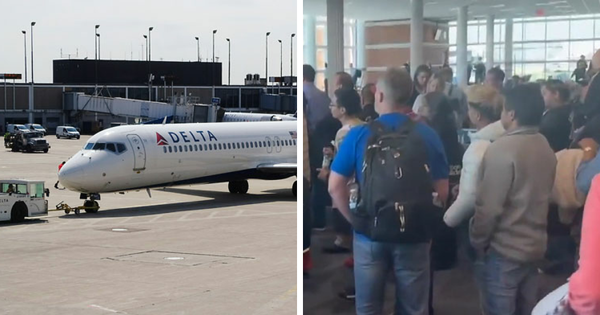A rare “bum-breathing” turtle found in a single river system in Queensland has suffered one of its worst breeding seasons on record due to flooding last December. It has prompted volunteers to question how many more “bad years” the species can survive.
A freshwater species that breathes by absorbing oxygen through gill-like structures in its tail, the Mary River turtle is endemic to south-east Queensland. Its population has fallen by more than 80% since the 1960s and its conservation status was upgraded from endangered to critically endangered last year.
Volunteers have worked for more than two decades at Tiaro, about 200km north of Brisbane, to save the species. The Mary River typically flows low at the start of summer – about 2 metres deep. But when Guardian Australia visited in December, it had surged above 10 metres after unusually heavy rain.
The result was the number of nests on the riverbanks – and the number of hatchlings that survived – was one of the lowest in the conservation program’s 24-year history. Seventeen nests, known as clutches, were laid during the season. Usually 30 to 40 are expected during the turtle’s breeding months of October, November and December.
Eggs in nine clutches hatched successfully but eight were lost to flood waters. The head of the conservation effort and Tiaro Landcare project leader, Marilyn Connell, said the Mary River turtle already had “lots of things going against it, making it difficult to recover”.
“You sort of can’t believe it,” she said. “We felt despondent.”
The volunteers made the difficult decision to intervene and move two nests higher up the riverbanks. One of these survived the flood waters.
The river eventually peaked at 11.5 metres at Tiaro in December, one of only six times it has been recorded at that height at that time of year in the past 100 years, according to Connell.
The Mary River turtle’s formal listing of critically endangered means scientists consider it one rung away from extinction. The remaining wild population is estimated to be about 10,000. They face threats from foxes and other nest predators, invasive species and developments that disturb the flow of the river, including dams and weirs.
“Every year matters, that’s how we feel,” Connell said. “You just have to ask: how many of these bad years can a species that has already declined this much deal with?”
Community volunteers protect nests and hatchlings on the riverbanks from predators but even after successful breeding seasons the population has not recovered. The turtle is a long-lived species and can bounce back from a poor breeding season. But too few turtles are reaching maturity, which occurs after about 25 to 30 years.
The volunteers are now working with researchers from Charles Darwin University to investigate why many juvenile turtles are not surviving to adulthood and what can be done to address this. Results are expected later this year.
Dr Mariana Campbell, a researcher at the university, said “obviously there is something else happening in the river”, and little would be done to help the turtle were it not for the Tiaro community.
Connell said volunteers were concerned that the climate crisis was compounding the threats facing the species. She said sea temperatures off the southern Queensland coast had been at record levels before the floods. Scientists say this leads to more intense rain as the amount of water vapour in the atmosphere increases. “You think to yourself, is more of this what we’ve got to look forward to?” Connell said.
She said despite the turtle’s critically endangered status, volunteers have had to rely on fundraising drives, selling chocolate turtles and chasing financial support from overseas to continue their conservation work.
She was shocked in 2010 when the Landcare group received a conservation grant from the United Arab Emirates. The same fund gave them further grants in 2011 and 2018.
After a 2022 flood in Queensland and New South Wales, volunteers also received a $300,000 grant through a state government disaster fund. Connell said this was typical of her experience – that “you have to have a disaster, or the species has to be on its last legs, to get funds”.
“It is ironic but that’s the way conservation works in Australia,” she said.
She said while community projects like hers could “chip away” at environmental work they ultimately needed serious government and philanthropic support. “We can’t be doing it all off our own backs,” she said.







